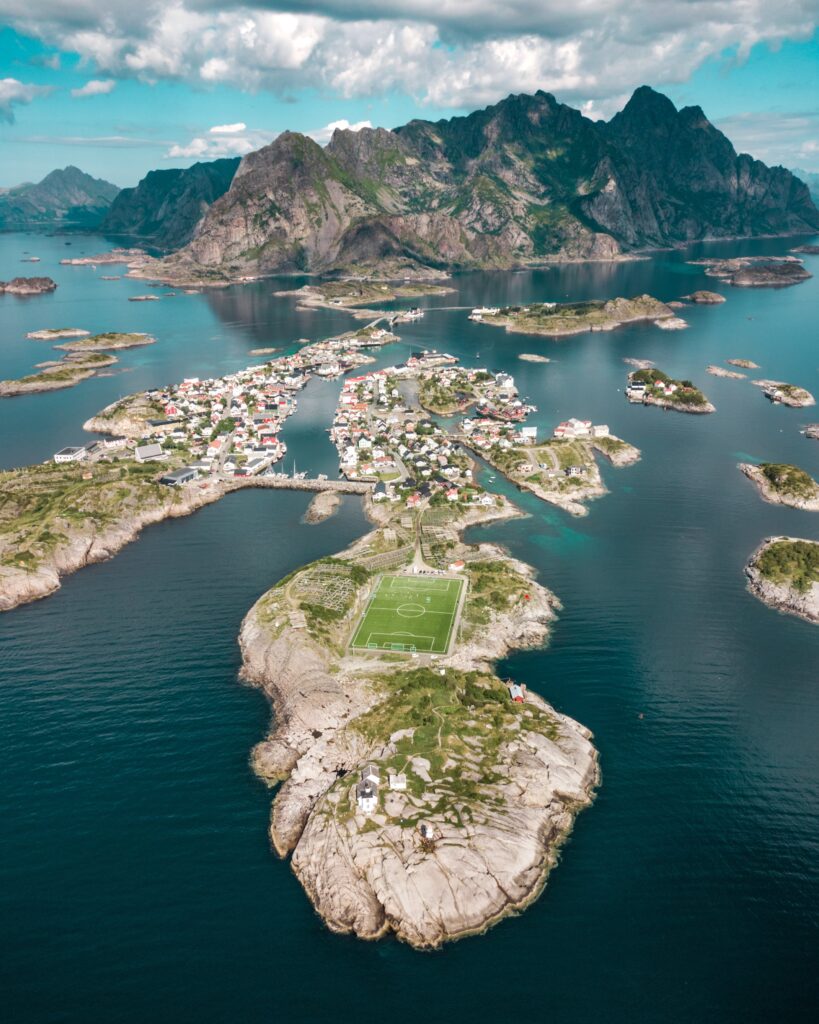Lofoten is a must-go destination for all aspiring trad climbers. There is a lot for everyone, and the climbing around Henningsvaer is very accessible without a vehicle. Although remote, the infrastructure on the islands is relatively good. The main factor to consider is the price of getting out there and buying food. Many climbers from all over the world flock to Lofoten during the summer. It has captivated the minds of many aspiring climbers and will continue to do so. In this article, I address some of the key points to know if you plan on going out there.
Logistics
How to Get There
If you’re traveling from the UK, the cheapest way to Lofoten is to fly. There are connecting flights with Scandinavian airlines that go Manchester-Oslo, Oslo-Bodø, Bodø-Svolvaer that are around £350 one way or around £500 return with a 21kg bag included. For the exceptionally keen environmentalists, there is the possibility of taking the train overnight from Oslo to Bodø, then taking a ferry from Bodø to Svolvaer. Driving is possible and possibly a good idea if you plan to go for a month or longer as things soon start to get expensive in Arctic Norway. Loading up with food and hitting the road for a 3-day drive may turn out to be more economically viable when you budget for food as it is 2 or 3 times more expensive than back home.
How to Get Around
You can expect to see sky-high prices for car rentals mid-summer, around £800 for a week if not higher. The buses are relatively cheap and connect all the main towns. Hitchhiking has gotten harder within the last few years post covid but you may still be able to bump a ride.
When to Go
The summer months of mid-June to mid-August are optimal. The limiting factor of Lofoten is the weather. Technically in the Arctic Circle and an archipelago of mainland Norway, this climbing paradise is known for a variety of conditions ranging from cold and wet to 25c, sometimes both within the same week. The mid-summer months typically host the best conditions for climbers. You can expect 24 hours of daylight, so a head torch won’t be necessary.
Accommodation
It is possible to camp anywhere for 2 nights for free in Norway, excluding agricultural land or someone’s garden. For those relying on public transport, camping close to Henningsvaer may be the best option. People quite often camp under the Gandalf cliff or in between Gandalf and Henningsvaer. There is a camping zone at Kalle that has designated camping spots and clean public toilets for around £1, the toilets have a card reader on the outside. You do have to pay for the parking at Kalle now, but there is climbing within walking distance from the camping. There are also official campsites on Lofoten that have their own toilet and showers. For those who like a few comforts, this may be a worthwhile option. For those who like even more comfort, you can rent a wood cabin between a few people that wouldn’t break the bank.
Where Can I Buy Gear and Food?
There is a small shop in Henningsvaer that supplies basic groceries but is expensive. There is a slightly bigger shop in Kabelvåg. The biggest and least expensive shops are in Svolvaer. If you have a car, it’s well worth the drive.
Outdoor Shops Henningsvaer has the best climbing shop with a café right next door that can be seen as the social hub for Lofoten. There is also a guiding school based out of Henningsvaer. There are some general walking and outdoor shops in Svolvaer where it is possible to buy camping gas. The petrol stations also sell camping gas.
The Guidebook
Rockfax is still the most inclusive guide out there and it can be purchased from the climbers’ shop in Henningsvaer. The guide is mostly accurate on the low to mid grades but when it comes to the more esoteric and harder climbs, the topos and descriptions can be fairly inaccurate. When partaking in large outings, up Storpillaren for example, it may be worth finding other information.

